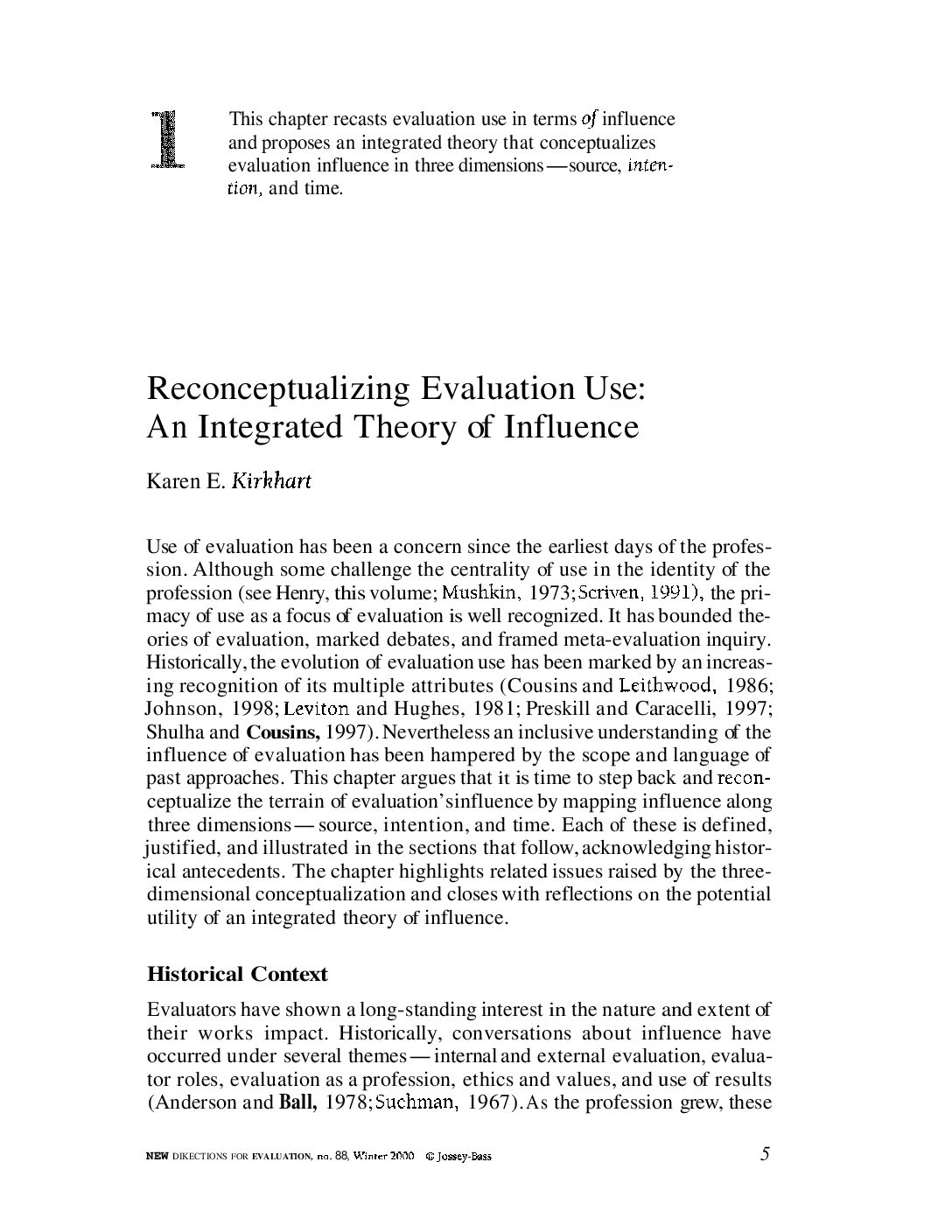Use of evaluation has been a concern since the earliest days of the profession. Although some challenge the centrality of use in the identity of the
profession (see Henry, this volume; Mushkin, 1973;Scriven, 1991),the primacy of use as a focus of evaluation is well recognized. It has bounded theories of evaluation, marked debates, and framed meta-evaluation inquiry.
Historically, the evolution of evaluation use has been marked by an increasing recognition of its multiple attributes (Cousins and Leithwood, 1986;
Johnson, 1998; Leviton and Hughes, 1981; Preskill and Caracelli, 1997;
Shulha and Cousins, 1997). Nevertheless an inclusive understanding of the
influence of evaluation has been hampered by the scope and language of
past approaches. This chapter argues that it is time to step back and reconceptualize the terrain of evaluation’sinfluence by mapping influence along
three dimensions-source, intention, and time. Each of these is defined,
justified, and illustrated in the sections that follow,acknowledging historical antecedents. The chapter highlights related issues raised by the threedimensional conceptualization and closes with reflections on the potential
utility of an integrated theory of influence.

